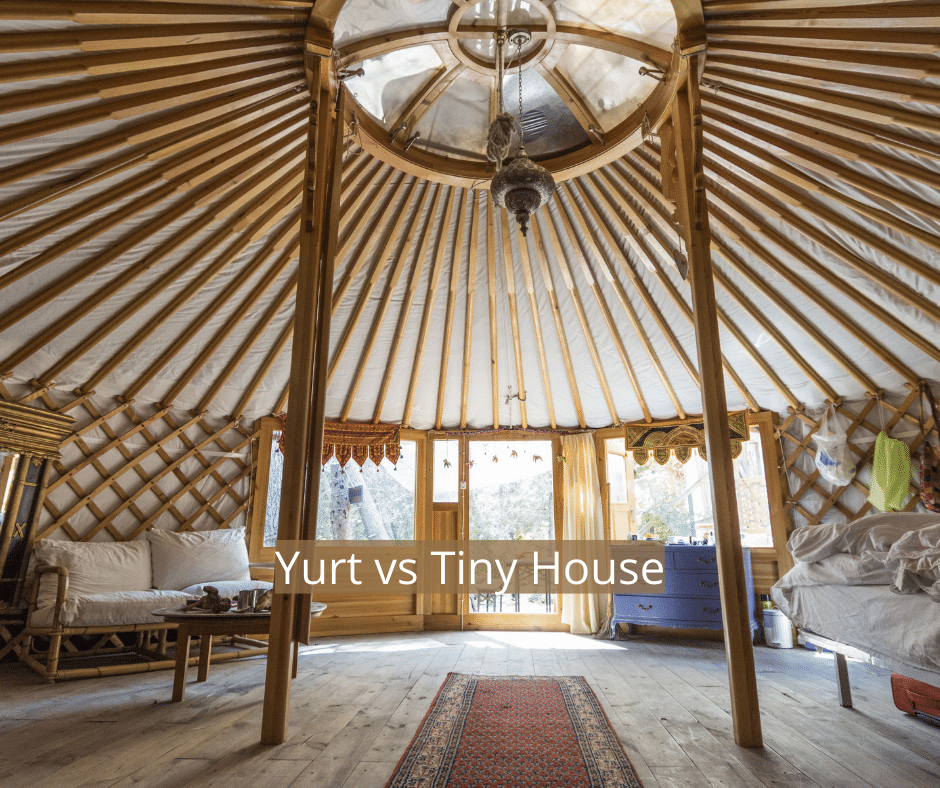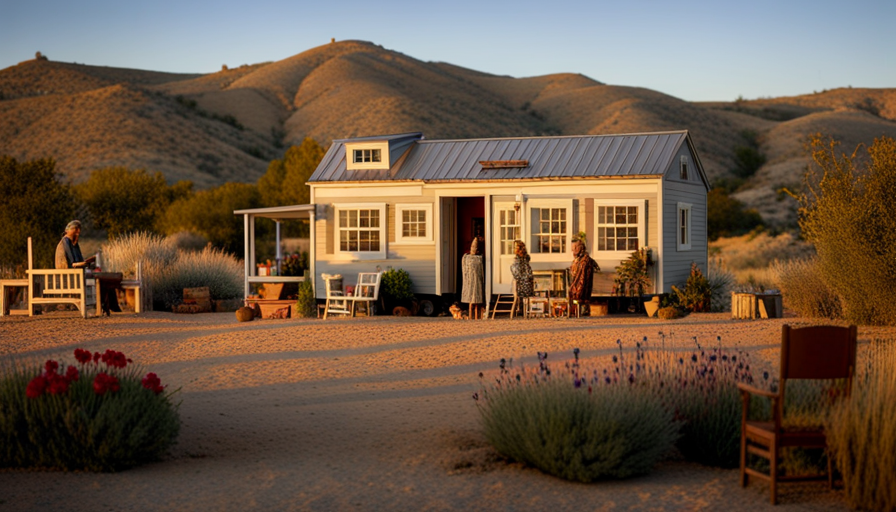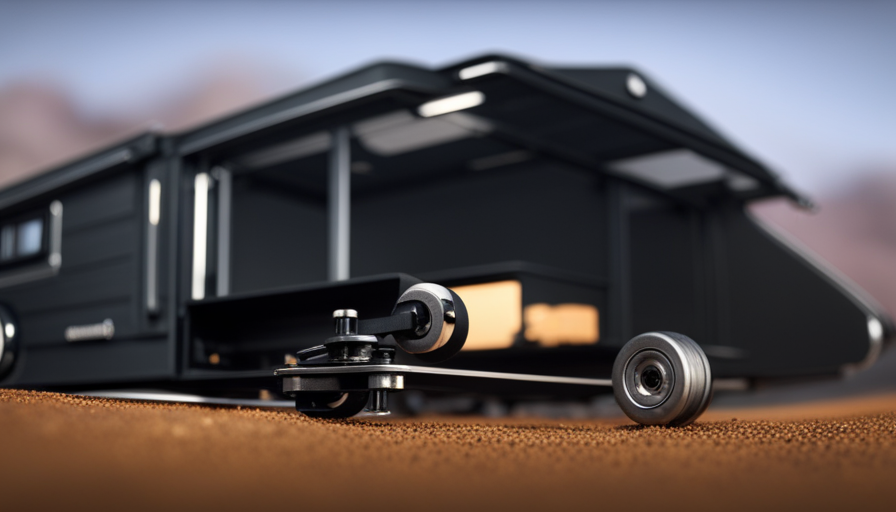Before starting to build a treehouse, it is vital to determine the preferred height. Choosing two trees can result in a larger treehouse that requires less bracing, as tree trunks tend to split at the base and grow outward. Typically, the design of a treehouse is based on two trees that are situated near each other. To avoid bracing problems, it is recommended to pick two trees that are alike in height and width.
If you’re planning on building a treehouse, there are a few things you should keep in mind.
- The height. A well-planned, well-built treehouse should be 6 to 10 feet tall and no higher than 13 feet. That’s just enough height to give kids a sense of adventure without putting them in danger.
- The railing. A railing with vertical wood slats and a minimum height of 36 inches is essential for any treehouse platform. The slats should be separated by no more than 4 inches to prevent kids from falling through.
- The roof. The roof should be pitched so that rain and snow will slide right off – no one wants a soggy treehouse. With these guidelines in mind, you can build a safe and fun treehouse that your kids will enjoy for years to come.
Consult with Neighbors
Before building a treehouse, consider how it will impact your neighbors. It should be at least 10 feet away from the property line and should not encroach on neighboring trees or lots. It should also be high enough to provide enough space for your children to climb into and out of, but low enough not to disrupt the surrounding landscape. Consult with your neighbors about the height and layout of the treehouse before you build it.
If you have a neighbor who is bothered by the height of the treehouse, talk to them about the best placement. If the treehouse is encroaching on the neighbor’s property, you can ask them if they’d mind making a minimal adjustment to the height of the treehouse. If they say no, try to engage in respectful conversation. It’s not a legal obligation to build a treehouse, but it should not interfere with your neighbor’s daily life.
Before you start building a treehouse, make sure to consult with your neighbors and check the land use plan. A township’s land use plan shows where trees are located. You can get this plan from the municipality or public building authority. Ask your neighbors if they’d be happy with your treehouse, or they’ll be happy to help you find a better location. You might even want to make it on the side or back of your property to avoid having to share the space.
After gaining approval for the design, you should consult with your neighbors about the height of the treehouse. Treehouses that are visible to neighboring houses should be at least 10 feet high, but be sure to check with them for permission. While you don’t need to get building permits for treehouses, it’s still important to comply with the city’s zoning rules.
Build a Platform
When building a treehouse, it is often important to build a platform for the floor. A poorly constructed platform will lead to an uneven floor, which is a safety hazard. The platform should be flat, with a slope of around 10 degrees. The platform should be a minimum of 16 inches off the ground. The platform comprises two rows of pressure-treated 2×10 or 2×8 planks spaced about 16 inches apart.
When building a platform, make sure to use a tree that is at least forty centimeters tall. You should also allow extra room for braces to support the platform. You will attach the braces to the lower portion of the tree and the platform’s edges. If you choose to use 2x4s, make sure to cut 45-degree angles in the top ends. Then, build outwards from the triangulation point. When building a platform, make sure to cut the corners of the beams wide enough to create a sliding joint.
A treehouse is not complete without a staircase. To make this possible, you need to build a platform that will allow you to access the treehouse. You will need at least four or six wooden posts. You can also use old fence posts. To save money, you can also use reclaimed timber to build railings and walls. To finish off the platform, you can add railings and walls. Use old fencing or timber frames to build walls, or even a platform to build the treehouse on.
If you live in an area with a property line, you can use concrete supports for the platform. However, if you are building on the edge of your property, you should consider using the GTS Friend and Static Support + Distance Rings to prevent the treehouse from tipping over. These products can also help you build a larger and heavier platform than usual. If you don’t have trees near your property line, you can also use a platform that is at least 8 feet wide.
Add a Roof
If you have built a treehouse yourself, you can always add a roof to provide shade and protection from rain. Depending on the design, you can choose a roof made of plywood, shingles, or galvanized flashing. Another option is to use a secure sloped tarp. Depending on the height of the roof, you may need to build a ladder. The rungs should be spaced about 10 to 14 inches apart. If you are building the roof yourself, you can use lumber and steel bars to construct the ladder.
Another thing to consider is the ground support. If you plan to use a palm tree, make sure it has a strong root system, otherwise you may need to use another type of tree. Be sure that the palm tree does not bump into the floor or roof system. You may also need to use a spacer made of padded material, as it will affect the stability of the structure. You should also consult with your insurance agent about the possibility of a lawsuit.
Another way to protect the inside of your treehouse is to ensure that there is proper ventilation. Ventilation will help to keep the treehouse cool while removing moisture. The ventilation system can be as simple as small holes drilled at regular intervals in the walls. Be sure to cover these holes with mesh to keep out any insects. This will also keep the inside humidity level at a reasonable level. When choosing the material for your roof, remember to consider the space required for the deck and house.
Lastly, you can consider adding a roof to a treehouse. You may want to use a wooden structure, or you can also use a tarpaulin or weatherproof fabric. Make sure that you consider the treehouse’s growth rate and potential for expansion before making any final decisions. There are many materials that will help you achieve your goal, and the final decision will depend on your budget and design.
Install Railings
One of the most important parts of a treehouse is the railings. These are not just for aesthetic reasons, but for safety as well. The bottom rail should be at least 36″ tall and the top rail should be at least 42″ high. When building a treehouse, remember that it can fall and cause great injury. It’s important to choose the proper attachment method for safety, as well as for the health of your tree.
One option is wood railing. A wood railing is more secure and looks more beautiful than plastic or pvc. Various types of wood are available to fit the treehouse. You can get a traditional lattice style or one with decorative sunburst designs. Make sure that your railing matches the design of your stairs and makes the space look cohesive and beautiful. It is important to follow all instructions for installing the railings properly.
To build a treehouse, prepare the platform. Ensure that the platform is level and free of any unevennesses. Once you have cleared the platform, you can place the two-x-four studs in each corner. Ensure the posts are tall enough to serve as corner posts for the railing. Using a framing nailer, you can then attach two-x-eight planks to the four posts. The floor frame can be attached to the posts using 3 inch framing nails.
When building a treehouse, remember to install railings. This will keep your children safe when they go up and down. You will also want to install stairs and a pulley system. You can also use a rope ladder to reach the top of the treehouse. Installing stairs is a good idea too because it will allow your kids to get up and down easily. You should also ensure that the steps are at least 10 inches apart.
Attach Netting
You can attach netting to a treehouse using simple tools, but it’s important to choose the right material. There are many different types of netting, and you can choose by color and style. Generally, nets are sold by the linear foot, but some have minimum square footage requirements. The nets used in treehouses look like manila or sisal rope, but they are actually UV-protected nylon.
Before securing the netting to your treehouse, make sure to consider the movement of the tree. If your tree is tall, do not bolt the attachment between two thick trunks. This is risky, because moving branches can exert great pressure on bolts. Additionally, if the wind is strong enough, the bolts can snap. So, it is best to install eye bolts instead.
When attaching netting to your treehouse, use quality fasteners that are sturdy and secure. When you attach netting to your treehouse, make sure to space the main beams a few inches apart from each other. This will protect the tree from damage. Also, don’t forget to check the spacing between the trunks and the main beams. You can also buy specialized hardware like Treehouse Attachment bolts.
Treehouses can be difficult to attach. Using nails or screws too often will stress the tree and result in damage. To prevent this, you should choose screws that are rustproof. Lastly, make sure the treehouse is close to two trees that are about the same height. This way, it won’t be in the way regarding attachment. Having a sturdy treehouse is essential for a safe environment for the kids and adults.
Hi, I’m Emma. I’m the Editor in Chief of Tiny House 43, a blog all about tiny houses. While tree houses are often associated with childhood, they can be the perfect adult retreat. They offer a cozy space to relax and unwind, surrounded by nature. And since they’re typically built on stilts or raised platforms, they offer stunning views that traditional homes simply can’t match. If you’re looking for a unique and romantic getaway, a tree house tiny house might just be the perfect option.










